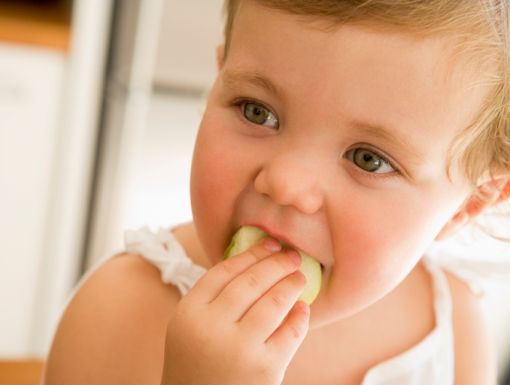
Added Sugars Are Not So Sweet For You
Sugar is everywhere. From natural and healthy sources like whole fruits and milks to a plethora of empty calorie foods and beverages (those that do not provide nutritional benefits like fiber, protein, vitamins, minerals, etc). You're probably well aware of the high sugar content from beverages like sodas, juices, sports drinks and other sweetened beverages, but we can't forget about candies, cookies, pies and ice cream. I could go on and on. What you may not realize is that even foods like cereals, granola bars, yogurts and breads can also contain added sugars!
See what I mean? It's everywhere!
What's so bad about having too much sugar?
One of the biggest problems is that high sugar foods also typically mean the foods contain lots of calories with very little (if any) nutrients. When we eat these high calorie foods, it often displaces more nutritious, yet lower calorie foods from our diets. Additionally, high sugar foods often leave you feeling hungry very shortly after eating, which leads to larger portions and higher calorie intake – all while leaving you with energy slumps and fatigue. If the trend continues of consuming too many calories for what your body needs, you can become overweight or obese and have increased risk of health consequences like diabetes and heart disease – not to mention too many sugars in your diet can also lead to cavities and poor gum health. When you also account for sugary beverages consumed in addition to high calorie foods, this contributes to these health risks even more so.
It's all about label reading?
Unfortunately, at this time, it's not easy to determine from a food label whether the sugars are natural or added sugars. The ingredients are where you need to look to find if there are any added sugars. To complicate things, there are many different ingredients that can be used that all mean "sugar" including but not limited to:
- Sugar, brown sugar, raw sugar
- Fructose
- Dextrose
- Confectioner's powdered sugar
- Corn syrup, corn syrup solids and high fructose corn syrup
- Honey
- Maltose
- Maple syrup
- Molasses
- Nectar
- Sucrose
- Glucose
- Sugar cane juice
The recommendation by the American Heart Association for men and women is to limit your added sugar intake to 150 and 100 calories per day, respectively. That breaks down to just 36 grams (9 teaspoons) for men and 24 grams (6 teaspoons) for women. For kids, that number should be even lower, more like 3-4 teaspoons (12-16 grams) per day!
Truth be told, we really shouldn't have any added sugars on a daily basis, but instead reserve them for special occasions like birthdays or holidays.
As Halloween approaches, you may be thinking, "Well, what on earth do we do?" Here are three simple steps:
1. Educate yourself on the amount of sugar in candy. It'll make it easier to make healthier decisions when you know how bad it is for you and how much is in candy.
- 3 Halloween-sized bags of Skittles = 34 grams of pure added sugar
- 5 Reese's miniatures = 23 grams sugar
- 5 pieces Kit Kit = 20 grams sugar
- 2 Halloween-sized bags of Peanut M&Ms = 18 grams sugar
- 8 Starbursts = 22 grams sugar
2. Offer a larger quantity of healthier options for kids that aren't loaded with sugar.
For trick or treating, you could go the non-food route and give out stickers, notepads, bouncy balls, etc. If you're looking for better food options, try individual bags of:
- Barbara's whole grain graham-like crackers (whole grains!)
- Skinny Pop Popcorn (portion controlled whole grain fiber)
- Emerald 100 calorie nuts (fiber + protein + healthy fats)
- Simply Balanced Fruit Snacks (made with only fruit juices, not syrups or sugars)
- Larabars (only nuts & fruits, no sugars added)
Even going with Kashi bars, Nature's Bakery Fig Bars or Nature Valley Protein Bars will be better options, especially for older kids. They contain relatively small amounts of added sugars.
If you're having a party or bringing treats to your child's school, you can make fun Halloween foods out of oranges shaped like pumpkins, cheese sticks made to resemble Frankenstein or drizzle sliced apples with a little peanut butter for kid-friendly, but mom (as well as dietitian and doctor) approved snacks.
3. Possibly consider including a favorite or two.
I like to offer Justin's peanut butter cups or Dove dark chocolate to trick-or-treaters. The mini versions of the chocolate-nut options are fine occasionally and in small quantities.
Other tips for trick-or-treating nutritionally with success:
Fill up on a nice protein and vegetable rich dinner before you go trick or treating (something like a bowl of seafood gumbo with brown rice or a lean chili would fit the fall festivities theme).
When you get home and sort through the candy with your kids, allow them to pick out a couple pieces and reserve the rest for some other time. You can space it out like this for the next couple of weeks and allow them a treat or two after dinner.
I definitely believe in moderation and not depriving your children. There's an important balance that can be found by offering a few pieces of something sweet once they've filled up on a nutritious meal. Letting them choose and having some control helps to prevent fights, tantrums and unhealthy relationships with food down the road.

